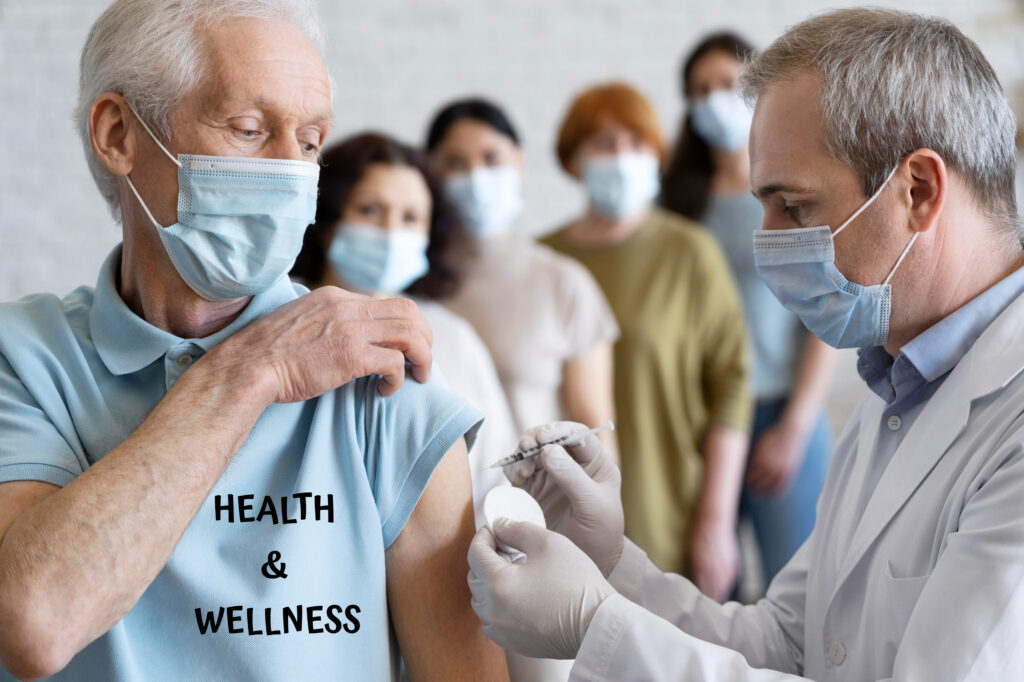Vaccination stands as one of the most significant achievements in public health, drastically reducing the incidence of infectious diseases worldwide. By artificially activating the immune system, vaccines provide a safe and effective means of preventing illnesses that once claimed millions of lives. This article explores the profound impact of vaccination, detailing its history, mechanisms, and critical role in maintaining public health.
The Basics of Vaccination
Vaccination involves introducing a substance called an immunogen into the body to stimulate an immune response without causing the disease. This process primes the immune system to recognize and combat specific microorganisms, such as viruses and bacteria, if encountered in the future. The immune system’s adaptive immunity, which includes the production of antibodies, is a crucial component of this response.
There are various types of vaccines, including:
- Live attenuated vaccines: These contain weakened forms of the microorganism, such as the measles, mumps, and rubella (MMR) vaccine.
- Inactivated or killed vaccines: These consist of microorganisms that have been killed, such as the polio vaccine.
- Subunit, recombinant, or conjugate vaccines: These include specific proteins or toxins from the microorganism, like the hepatitis B vaccine.
- mRNA vaccines: A newer type that uses messenger RNA to instruct cells to produce a protein that triggers an immune response, such as the COVID-19 vaccines.
Historical Milestones in Vaccination
The history of vaccination dates back to the practice of variolation, an early method of immunizing individuals against smallpox by exposing them to material from smallpox sores. This practice was notably advanced by Edward Jenner in the late 18th century, who discovered that inoculating people with cowpox could protect them against smallpox. Jenner’s work laid the foundation for modern immunization.
Louis Pasteur, another pioneer in microbiology, developed vaccines for rabies and anthrax in the 19th century, further demonstrating the potential of vaccination in combating infectious diseases. These early successes led to the widespread adoption of vaccines and the eventual eradication of smallpox, declared by the World Health Organization (WHO) in 1980.
The Mechanism of Vaccines
Vaccines work by mimicking the infection process, allowing the immune system to develop a memory of the pathogen without causing the disease. This memory enables the immune system to mount a faster and stronger response upon future exposure. The key parts engaged with this interaction include:
- Antigens: These are the parts of the pathogen, such as proteins or toxins, that trigger an immune response.
- Adjuvants: Substances added to immunizations to upgrade the insusceptible reaction.
- Preservatives: Chemicals like thimerosal that prevent contamination and ensure vaccine safety.
The Role of Vaccination in Public Health
Vaccination is critical in controlling and preventing infectious diseases. It has led to significant reductions in the incidence of diseases like polio, measles, tetanus, and whooping cough. The concept of herd immunity, where a high percentage of the population is immunized, provides indirect protection to those who are immunocompromised or unable to receive vaccines. This communal protection is essential in preventing outbreaks and maintaining public health.
Vaccine-Preventable Diseases
Several diseases have been nearly eradicated or significantly controlled due to vaccination efforts:
- Smallpox: The first disease eradicated by vaccination.
- Polio: Global polio vaccination campaigns have brought the disease to the brink of eradication.
- Measles: Once a common childhood illness, measles cases have dramatically decreased due to widespread vaccination.
- Tetanus: Vaccination has significantly reduced the incidence of this often fatal disease.
Vaccine Hesitancy and Public Health
Despite the proven effectiveness of vaccines, vaccine hesitancy remains a significant challenge. Misinformation, fear of side effects, and distrust in pharmaceutical companies contribute to declining vaccination rates in some regions. Vaccine hesitancy can lead to outbreaks of vaccine-preventable diseases, as seen in recent measles outbreaks.
Addressing vaccine hesitancy requires comprehensive public health strategies, including:
- Education and Awareness: Providing accurate information about the safety and effectiveness of vaccines.
- Community Engagement: Involving community leaders and healthcare providers in promoting vaccination.
- Policy and Legislation: Implementing and enforcing vaccination mandates and policies.
Safety and Monitoring of Vaccines
The safety of vaccines is rigorously monitored through various mechanisms. Before approval, vaccines undergo extensive clinical trials to assess their safety and efficacy. Post-licensure surveillance systems, such as the Vaccine Adverse Event Reporting System (VAERS) and the Vaccine Safety Datalink (VSD), help detect and investigate potential adverse events.
Global Vaccination Efforts
The WHO, in collaboration with organizations like UNICEF and the Centers for Disease Control and Prevention (CDC), leads global vaccination initiatives to improve immunization coverage, especially in low- and middle-income countries. These efforts have saved millions of lives and are crucial in achieving global health goals.
The Future of Vaccination
Advancements in vaccine technology continue to offer new opportunities for disease prevention. The development of mRNA vaccines, exemplified by the rapid creation of COVID-19 vaccines, has revolutionized the field. Ongoing research aims to develop vaccines for diseases like AIDS, cancer, and Alzheimer’s disease, promising to expand the impact of vaccination in public health.
Conclusion
Vaccination remains a cornerstone of public health, offering a safe and effective means of preventing infectious diseases and protecting communities. Despite challenges like vaccine hesitancy, the continued efforts of public health organizations, researchers, and healthcare providers are essential in maintaining and improving vaccination coverage. By understanding the importance of vaccination and supporting immunization programs, we can ensure a healthier future for all.
References
- World Health Organization (WHO). (2023). Vaccines and immunization. Retrieved from https://www.who.int/health-topics/vaccines-and-immunization
- Centers for Disease Control and Prevention (CDC). (2023). Immunization schedules. Retrieved from https://www.cdc.gov/vaccines/schedules/index.html
- National Institutes of Health (NIH). (2023). Vaccine research. Retrieved from https://www.nih.gov/research-training/medical-research-initiatives/vaccine-research
- Immunization Action Coalition (IAC). (2023). Vaccine safety. Retrieved from https://www.immunize.org/vaccine-safety/
- U.S. Food and Drug Administration (FDA). (2023). Vaccines. Retrieved from https://www.fda.gov/vaccines





